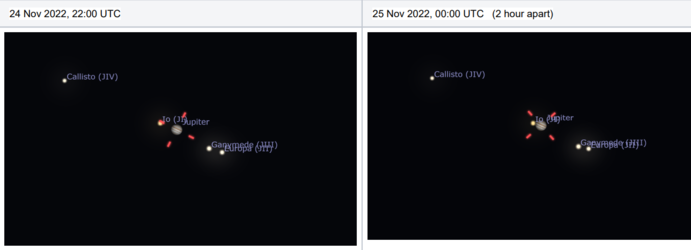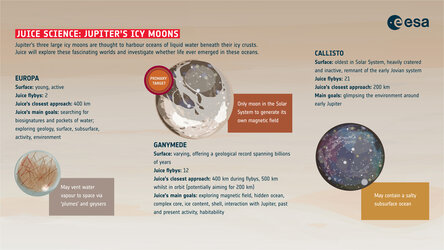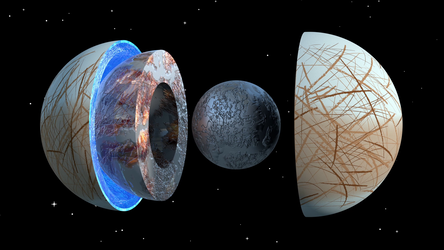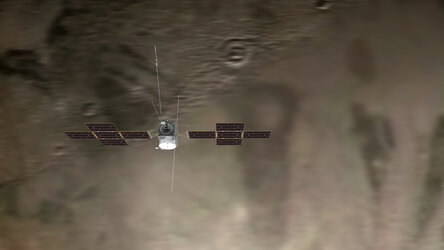
The orbits of the Galilean moons
The four large moons of Jupiter – Io, Europa, Ganymede and Callisto – are collectively known as the Galilean moons after Galileo Galilei first discovered them in 1609/10, and recognized that they were orbiting Jupiter.
This animation illustrates the relationship of the moons’ orbits with each other. When Ganymede makes one orbit around Jupiter, Europa makes two and Io four. This ‘resonance’ is in the ratio of 1:2:4. Callisto orbits further away and is not in resonance, although may well have been in the past.
ESA’s Jupiter Icy Moons Explorer, Juice, will provide measurements to determine the positions of the Galilean moons with unprecedented accuracy. This will give insight into energy exchanges between the giant planet and its natural satellites, and between the satellites themselves, providing information on the past evolution of the orbits and even the origin and formation of Jupiter and the moons themselves. Important information can also be gleaned on the moon’s interior and activity, and therefore on the consequences for potential habitability. This knowledge can also be applied to exoplanet systems.






